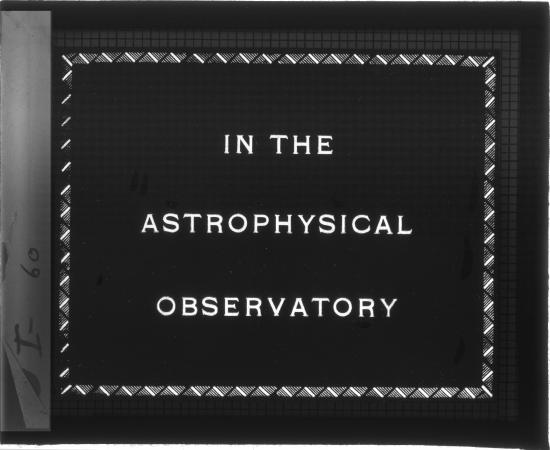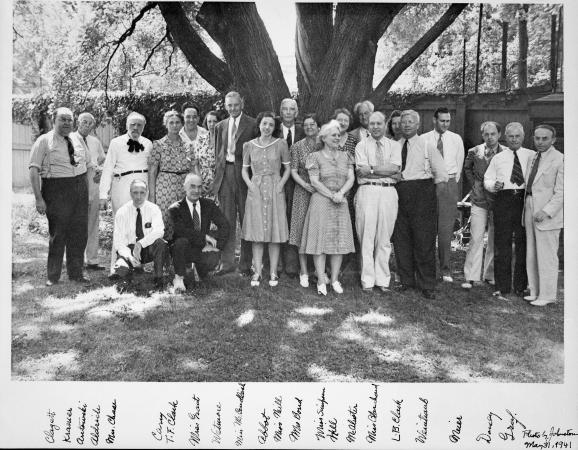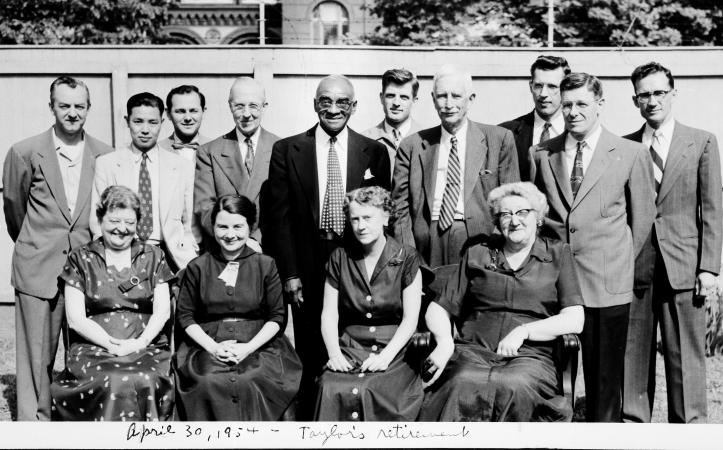In a previous blog, American Women’s History Initiative Curator Elizabeth Harmon explained our ongoing work at the Archives to capture as many women in science at the Smithsonian as possible, both historic and contemporary, and some of the challenges in conducting this research.
As an intern at the Archives, I have been identifying additional women and collecting information about them. One of the most fascinating leads thus far has been the women of the Smithsonian Astrophysical Observatory (SAO). It turns out that some of the earliest women employed in science at the Smithsonian were early-twentieth-century “computers,” who did the computations that were vital to analyzing weather and solar data collected by SAO.

One of the biggest challenges in my research so far has been navigating the Smithsonian Annual Reports. Early-twentieth-century annual reports only listed the staff of SAO with their first initials and last names, which makes it difficult to accurately identify and find out more about these women. Though, generally, women were easily discoverable, because they were denoted with either the title “Miss” or “Mrs.”
Working from compiled staff lists from SAO, I could comb Smithsonian Annual Reports for any mention of these names (a process much simplified thanks to the digitized copies available at the Biodiversity Heritage Library). The Ancestry Library Edition also proved valuable, making it possible to find out more from civil service, census, and marriage records. With these resources, I found leads on many of the computers, often including their full names!
The next step was a search through the Smithsonian’s collections. With full names to search, publications, personnel records, and even photos of some of the earliest women working in science at the Smithsonian were discoverable!

Gladys T. Bond was one of the computers with a long career at SAO. She worked her way up from Assistant Computer to Senior Physical Science Aid over a career of more than thirty years. In a 1929 letter, Smithsonian Secretary Charles G. Abbot, previous SAO director, wrote that he was regretful to receive Bond’s resignation as she had “so much experience, enthusiasm, and recollection regarding the work of the Obersevatory.” Bond resigned to spend time with her husband, who was working in the Panama Canal Zone for the U.S. Government, but she did not stay away for long. Abbot offered her another position at SAO only a few months later, and she accepted.
Nancy McCandlish Prichard worked as a Special Assistant to the Meterologist at SAO for three years before joining the Office of Strategic Services during World War II, where she was stationed in Cairo, Egypt. The lead for this interesting information came from Prichard’s marriage record that listed her as being married in Cairo, which was confirmed in Smithsonian Annual Reports as well as her Washington Post obituary.
Lena Hill, who started at SAO in 1931 and eventually became a research associate, was another computer with a long tenure. At the age of seventy-eight, Hill was working as secretary to Abbot and was described in a Smithsonain Torch article as “at least as spry as her boss,” who was still conducting scientific work at ninety-five. In 1969, Hill and Abbot published “A Long-Range Forecast of Temperature for 19 United States Cities,” the conclusion of an investigation that was ordered by Smithsonian Secretary Samuel P. Langley in 1905.

While I hit a few dead ends in my research, I was able to fully identify and research many of the earliest women at SAO.
Related Resources
- “Smithsonian Women in Science,” by Elizabeth Harmon, The Bigger Picture, Smithsonian Institution Archives
- Smithsonian Astrophysical Observatory, Smithsonian Institution Archives
- “The Women Who Mapped the Universe and Still Couldn’t Get Any Respect,” by Natasha Geiling, Smithsonian Magazine
Produced by the Smithsonian Institution Archives. For copyright questions, please see the Terms of Use.

Leave a Comment